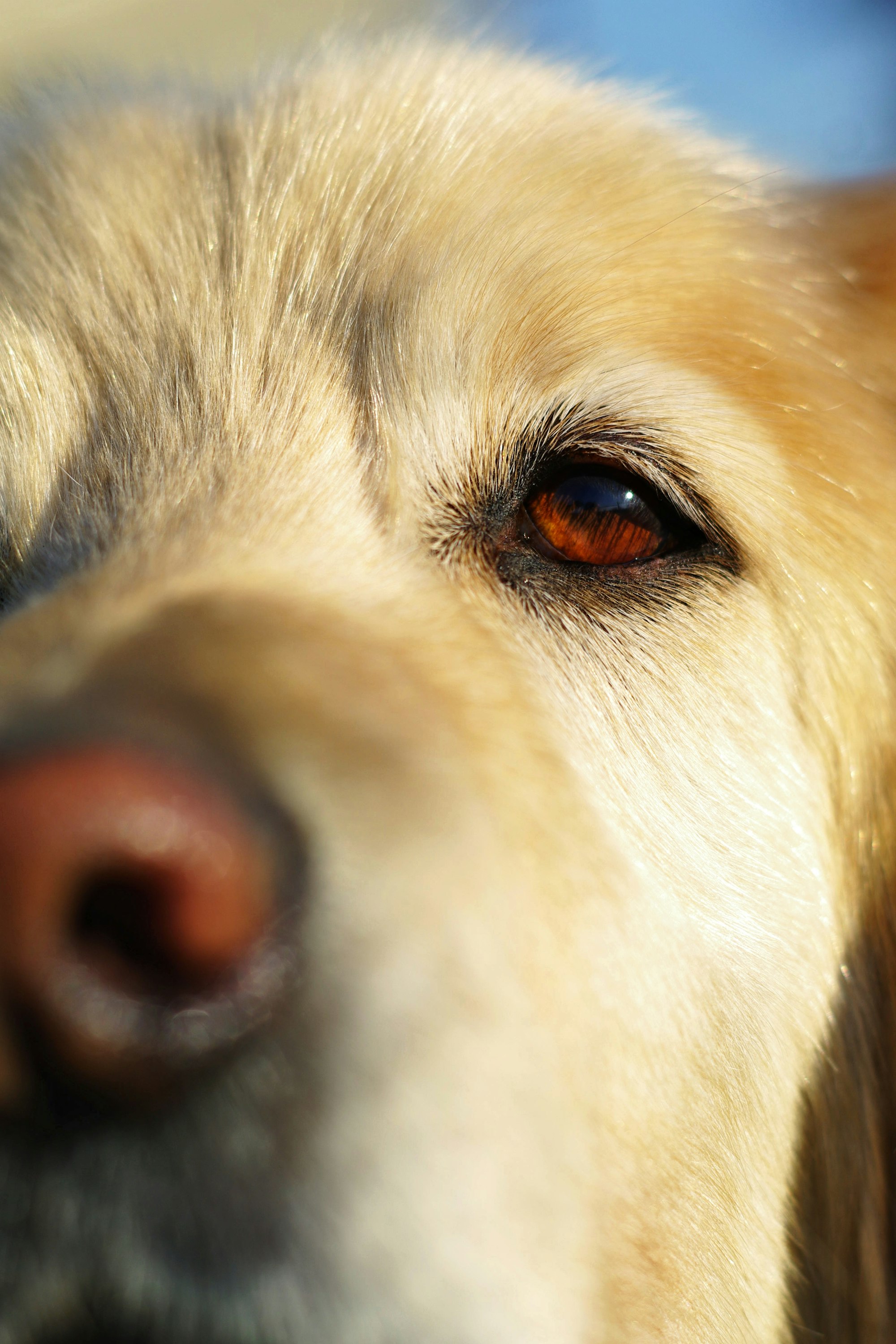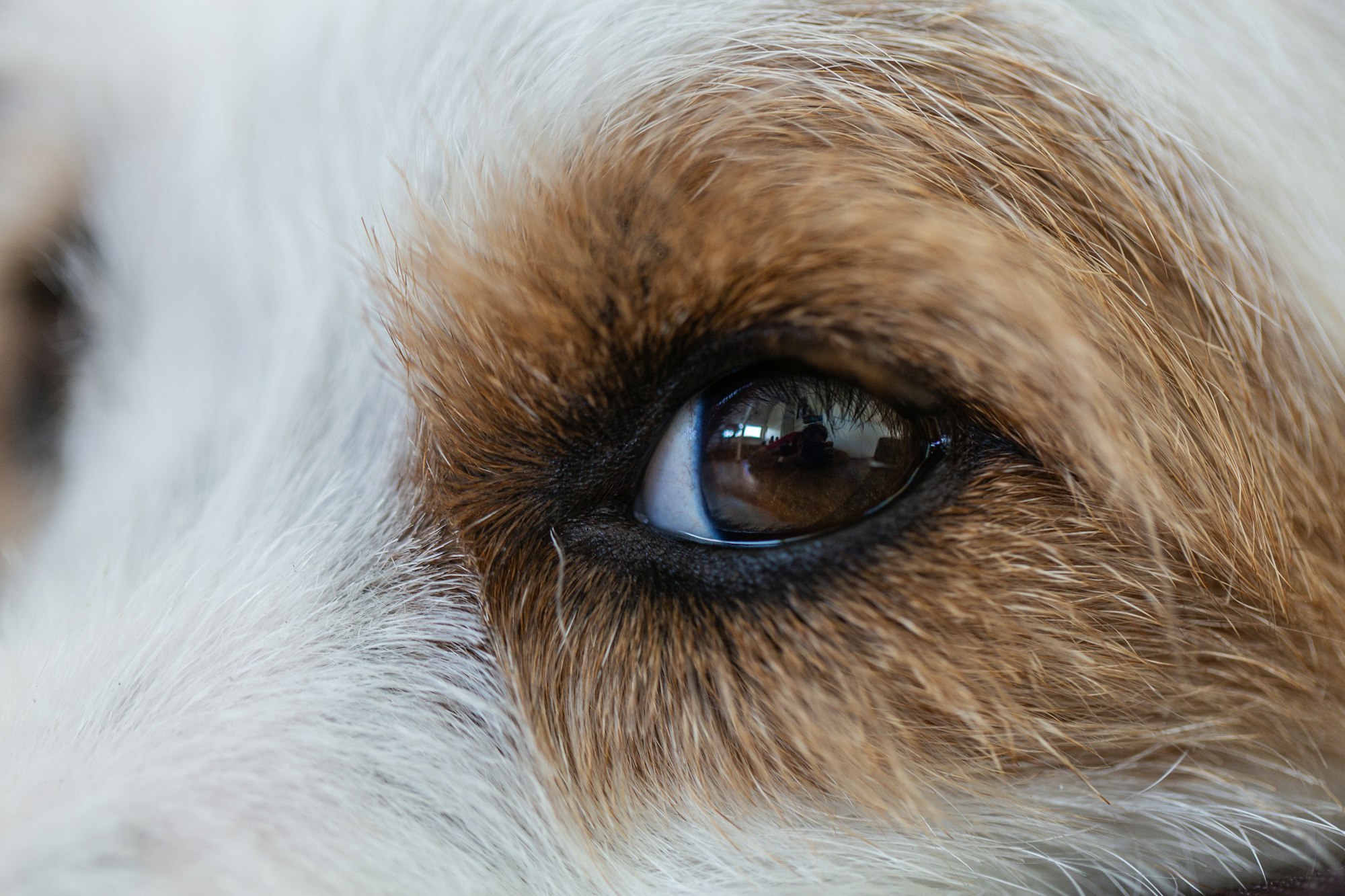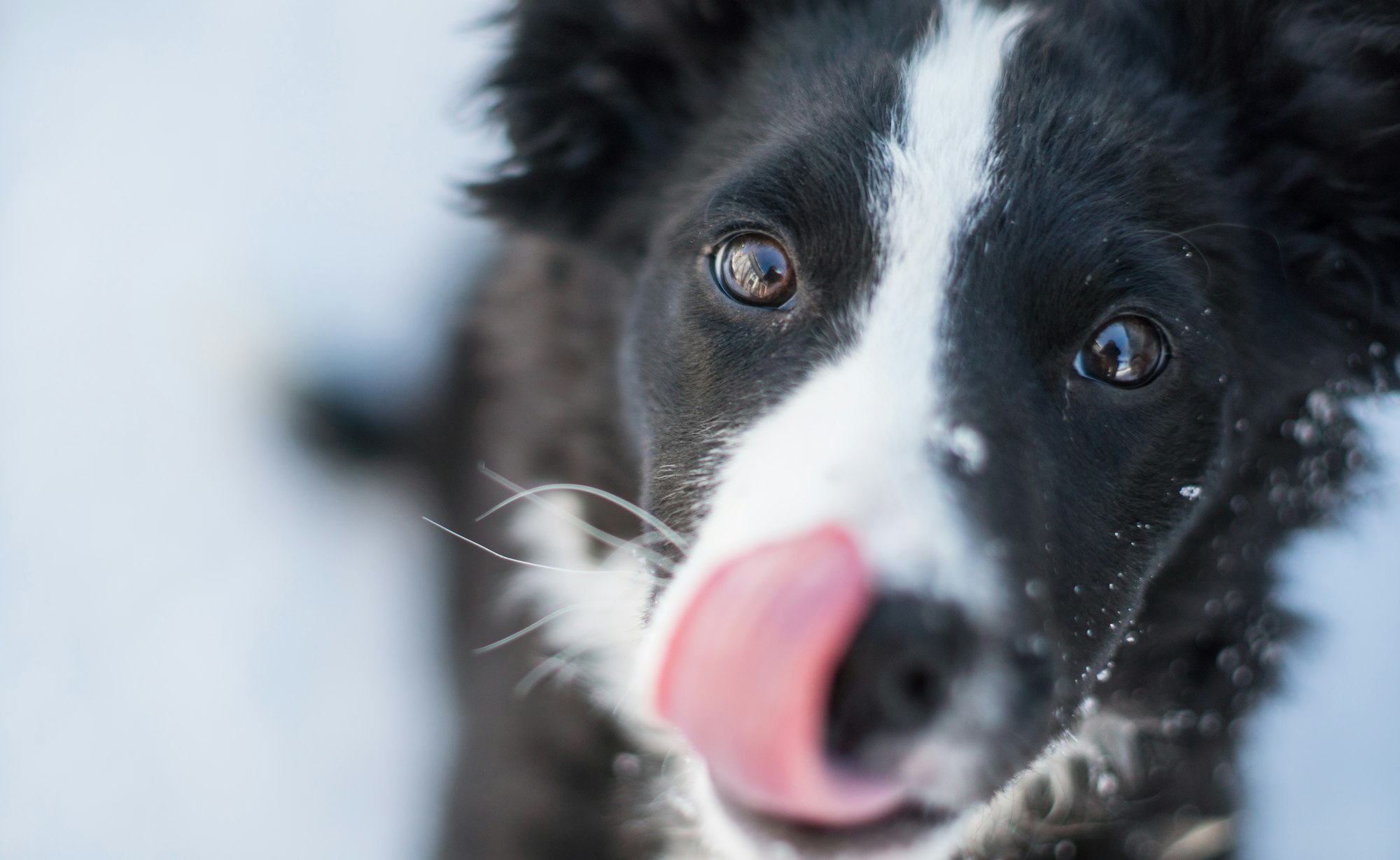Dogs, our four-legged friends, are known for their loyal and devoted nature. However, a worrying concern for many dog owners is the appearance of cloudy eyes in their beloved pets. It's important to understand that this issue isn't just cosmetic. Changes in your dog's eyes could potentially signify underlying health issues, some of which might be serious.
For instance, one sunny afternoon, you might be out on your usual walk with your canine companion. You notice a once bright-eyed and alert friend now has eyes that seem clouded or dull. Should you be alarmed? The answer, like many things in life, isn't black and white. Let's embark on this journey to unveil the mystery behind canine eye changes.
What Causes Cloudy Eyes in Dogs?
Dog eyes, much like human eyes, are intricate organs. When the eyes become cloudy, it could be due to various conditions. Here's a list of the most common ones:
- Cataracts: These are an accumulation of protein in the eye, leading to a blue-white haze.
- Nuclear Sclerosis: Common in older dogs, it causes a bluish haze but doesn't significantly affect vision.
- Glaucoma: This involves increased pressure within the eye, leading to discomfort and vision loss.
- Corneal Damage: Injuries, disease, or fleas can cause inflammation or ulcers in the cornea, leading to cloudiness.
Remember, if your dog's eyes change suddenly, it's crucial to seek veterinary help promptly.

Symptoms to Look Out For
Understanding what's normal for your pet is key. Regular monitoring of their eyes for any changes can help identify potential issues early. Here's what to look out for:
- Changes in eye color
- Swelling or redness
- Excessive tear production or pus-like discharge
- Squinting or blinking
- Pawing at the eye or rubbing it against objects
What's Next: Diagnosis and Treatment
If you notice your pet's eyes becoming cloudy, the next step is to visit the vet. Your vet might conduct tests like an eye examination, ocular pressure measurement, or even an ultrasound. They may also need to assess your dog's overall health using blood tests or radiographs.
Treatment depends on the cause of the cloudiness. Cataracts might need surgical intervention, while glaucoma could require medication or surgery. If the cause is an underlying condition, like diabetes, treatment might involve managing that condition.
Don't forget to provide your dog with plenty of water to keep them hydrated, especially if they're on any medication.
Looking Ahead: Prevention and Care
While you can't completely prevent eye problems in dogs, there are steps you can take to help maintain their eye health:
- Regular check-ups with your vet
- Providing a balanced diet rich in antioxidants
- Keeping their face and eyes clean
- Providing them with plenty of exercise to maintain overall health
Using these preventive measures can ensure that your four-legged friend enjoys a healthy and happy life.
Living with Cloudy Eyes: A Story of Hope
Let's share a real-life story to help illustrate what it's like to manage this condition. Max, a seven-year-old Labrador, started developing cloudy eyes. His owner, Sarah, noticed it during one of their hiking trips. Concerned, she immediately took Max to the vet, where he was diagnosed with early-stage cataracts.
Following the diagnosis, Sarah decided to get Max the necessary surgery. Max recovered well, and his sight improved. Sarah made sure to follow up with the vet regularly and ensure Max was on a healthy diet and received his eye drops regularly.
The cloudy eyes did not deter Max from living a happy, fulfilled life. It didn't stop him from enjoying his walks, playing fetch, or enjoying his favorite peanut butter treats. His story serves as a reminder that with the right care and therapy, a diagnosis of cloudy eyes does not spell doom.
The Role of Age in Canine Eye Changes
As dogs age, their bodies undergo numerous changes, similar to humans. One such change can be the development of cloudy eyes. But why does age play such a critical role?
Just as we may need reading glasses as we grow older, our canine companions also experience changes in their eyes. The lens hardens and becomes less flexible, leading to a condition called nuclear sclerosis, which can cause the eyes to appear cloudy. Though it might seem alarming, nuclear sclerosis is a normal part of the aging process and does not significantly affect a dog's vision.
However, older dogs are also more prone to cataracts, which can seriously impair their vision. Therefore, it's crucial not to dismiss cloudy eyes as just an aging change. If you notice such changes, always consult your vet to rule out conditions like cataracts or glaucoma.
Nutrition and Canine Eye Health
The saying "you are what you eat" applies to our four-legged friends as well. A well-balanced diet is essential for maintaining overall health, including eye health.
Antioxidants play a vital role in combating oxidative stress, which can contribute to eye diseases. Nutrients such as vitamins A, C, and E, along with carotenoids like lutein and zeaxanthin, are particularly beneficial for eye health. Omega-3 fatty acids, found in fish and flaxseed, can also support eye health.
Remember to provide fresh water to your dog alongside a balanced diet. Proper hydration is critical for all body functions, including the eyes.

Regular Check-ups: A Lifesaver
Just like us, our pets also benefit from regular check-ups. While your dog might seem healthy, some conditions might not show obvious signs until they've progressed. Regular visits to the vet can help detect issues early, ensuring your pet gets the necessary treatment promptly.
Canine Eye Health: A Lifelong Commitment
As a dog owner, your commitment to your pet's health is a lifelong journey. Their health, happiness, and quality of life depend on your care and attention. From routine exercise to regular vet visits, a balanced diet, and promptly addressing any health issues, caring for your dog is a multifaceted task.
This might seem like a significant responsibility—and it is—but the love and companionship our pets offer us make it all worthwhile. As we navigate the mystery of cloudy eyes in dogs, let's remember that our canine friends rely on us to provide them the best care possible. Their world is a lot brighter with us in it, and it's up to us to ensure that they continue to see and experience it fully.
Every Cloud has a Silver Lining
When it comes to cloudy eyes in dogs, the silver lining is that it's a manageable condition. Whether it's through surgery, medication, diet, or lifestyle changes, there are ways to manage this condition and ensure your pet continues to live a happy, fulfilled life.
So, the next time you're out for a walk or hiking with your dog, remember to take a moment to look into their eyes. These windows to their souls can tell you a lot about their health and wellbeing. And with knowledge comes power—the power to provide them the best care possible.
As we unveil the mystery behind canine eye changes, let's keep in mind that cloudy eyes are not a life sentence. With love, care, and proper treatment, our dogs can continue to enjoy their lives to the fullest, chasing balls, exploring the outdoors, and most importantly, spending time with their favorite human—you.
The Role of Breed and Genetics in Canine Eye Changes
It's important to know that some breeds are genetically predisposed to certain eye conditions. For instance, Cocker Spaniels, Poodles, Siberian Huskies, and Boston Terriers are more prone to cataracts. On the other hand, Beagles, Basset Hounds, and Cocker Spaniels are more likely to develop glaucoma. If your pet belongs to one of these breeds, be especially vigilant about their eye health and ensure they have regular check-ups with the vet.
Cloudy Eyes and the Risk of Infection
Dogs with cloudy eyes might also be at an increased risk of eye infections. This is particularly true for conditions like corneal ulcers, which could make the eyes more susceptible to bacteria and viruses. If your dog has cloudy eyes, be on the lookout for signs of infection, like redness, swelling, or discharge. If you notice any of these signs, seek veterinary help immediately.
Eye Protection for Our Furry Friends
Protecting your dog's eyes from potential harm is another essential aspect of maintaining their eye health. This includes avoiding harsh chemicals or irritants around the eyes, ensuring their faces are clean and free from long hair that could poke their eyes, and providing adequate protection during exercise or outdoor activities.
When outdoors, be mindful of potential hazards. For instance, while hiking with your dog, keep an eye out for low-hanging branches or bushes that could harm their eyes.

Coping with Vision Loss in Dogs
In some cases, despite our best efforts, our dogs may experience vision loss due to cloudy eyes. This can be a difficult time for both the pet and the owner. However, dogs are incredibly resilient and can adapt to vision loss with our help.
There are many ways to help a dog with vision loss. This includes keeping their environment consistent, using scent markers for important areas like food and water bowls, providing plenty of mental stimulation through toys and games, and providing regular exercise in safe and familiar areas.
Another aspect of coping with vision loss is providing your dog with emotional support. Extra cuddles, gentle words of encouragement, and lots of patience can go a long way in helping your dog navigate their new world.
Canine Eye Changes: Not a Death Sentence
The thought of your dog experiencing eye issues or vision loss can be scary. However, with timely intervention, most conditions that cause cloudy eyes can be managed, and in some cases, even reversed.
Remember, our pets are incredibly adaptable. Whether it's through learning to navigate the world without sight or overcoming the odds to make a full recovery, our dogs continue to surprise and inspire us with their resilience.
As we continue to unveil the mystery of canine eye changes, let's remember that our four-legged friends are more than capable of living full, happy lives, regardless of the challenges they face. As pet owners, our job is to support them, care for them, and love them, no matter what.
So, don't let the fear of cloudy eyes overshadow the joy of pet ownership. Instead, use this knowledge as a tool to provide the best possible care for your beloved pet. Because at the end of the day, our pets need us just as much as we need them. They rely on us for their health and wellbeing, and we rely on them for their unconditional love and companionship. It's a beautiful partnership that makes life that much richer.

Whether it's the joy of a simple walk, the excitement of a hiking adventure, or the comfort of a quiet evening at home, our dogs make our lives better in countless ways. Let's do our best to return the favor by caring for their health, including their precious eyes. Because a world seen through the eyes of love is a world worth seeing, for us and our dogs.
Embracing Technology: FI Dog Collars and Canine Eye Health
As we navigate the journey of canine eye health, there's one ally we shouldn't forget - technology. Specifically, pet tech products like the Fi dog collar, a smart collar that offers GPS tracking, fitness monitoring, and much more. You might wonder, how does a smart collar relate to canine eye health? Let's dive in and find out.
Keeping Track of Our Furry Friends
When your dog is diagnosed with eye issues that might lead to vision loss, one of your primary concerns would be their safety. A dog with compromised vision is more prone to accidents and may find it challenging to navigate the environment, particularly unfamiliar areas.
This is where the Fi dog collar comes into play. With its state-of-the-art GPS tracking, you can monitor your dog's location in real-time, providing peace of mind knowing you can locate your dog should they wander off during a walk or a hiking trip.
Promoting an Active Lifestyle
A healthy lifestyle that includes regular exercise is key to maintaining overall health, and that includes eye health. The Fi dog collar helps you keep track of your dog's activity levels, allowing you to ensure they're getting the right amount of exercise.
On the other hand, if your dog's eyes are affected and they need to restrict their activity levels, the Fi collar can help monitor this. It allows you to ensure they are resting appropriately and not overexerting themselves.
Health Alerts and Trends
Another impressive feature of the Fi dog collar is its ability to track your dog's health trends over time. Any sudden changes in behavior or activity levels could potentially indicate an underlying health problem, including issues related to eye health. If your dog suddenly stops engaging in their favorite activities, it could be a sign of discomfort due to an eye condition.
Moreover, if you're managing a condition like diabetes in your dog, which can lead to cataracts, the Fi collar's health tracking can be incredibly useful. Regularly monitoring their activity and sleep patterns can help manage their condition better and maintain their overall health.
Companion in Therapy and Recovery
If your dog needs surgery or therapy to address their eye issues, the Fi dog collar can play a role in their recovery process. By monitoring their activity levels, you can ensure your furry friend is getting adequate rest and not straining their eyes post-surgery.
Staying Hydrated
We have already stressed the importance of keeping your dog hydrated, particularly if they're on medication for eye conditions. While the Fi collar doesn't directly monitor your dog's water intake, it can help in a roundabout way. If your dog is active and exercises regularly, they need to compensate for the water they lose. You can use the Fi collar's activity data as a reminder to provide your dog with fresh water and ensure they stay hydrated.

A Helping Hand in Tough Times
In conclusion, a Fi dog collar can be a valuable tool in maintaining and managing your dog's eye health. While it's not a substitute for regular vet check-ups or a healthy lifestyle, it certainly provides additional support.
Our journey to unveil the mystery behind cloudy eyes in dogs is one of knowledge, care, and adapting to challenges. With modern technology like the Fi collar, we can ensure that we're doing everything we can to help our beloved pets lead a safe and happy life, no matter what health challenges they face.
Conclusion:
In the journey of unveiling the mystery behind cloudy eyes in dogs, we've explored the roles of age, nutrition, breed genetics, infection risk, eye protection, and coping strategies for vision loss. Emphasizing the importance of regular vet check-ups and maintaining a balanced lifestyle is crucial.
Innovative technologies like the Fi dog collar further help us monitor and manage our furry friend's health. Despite the potential challenges, it's important to remember that most eye conditions are manageable with proper care, and even vision loss doesn't dampen a dog's zest for life.
As pet owners, we hold the power to provide the best care for our companions, ensuring their world is as bright and full as possible, irrespective of the health challenges they face. Together, we can navigate the complexities of canine eye health, fostering a lifetime of happiness and health for our beloved pets.




